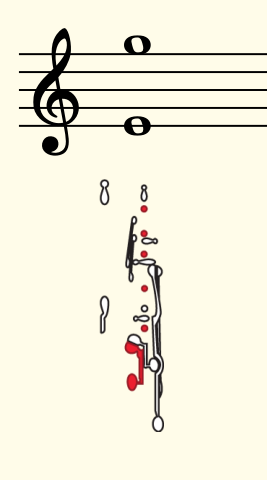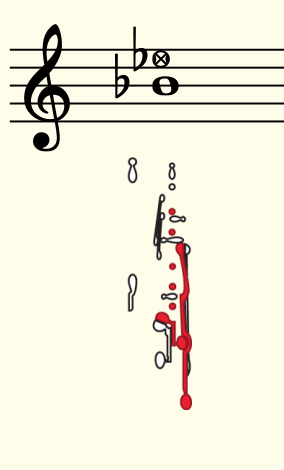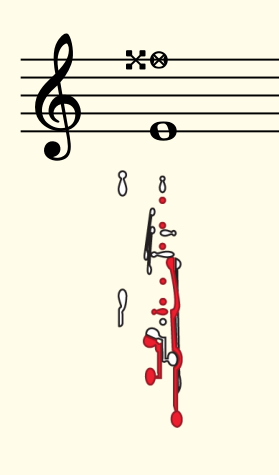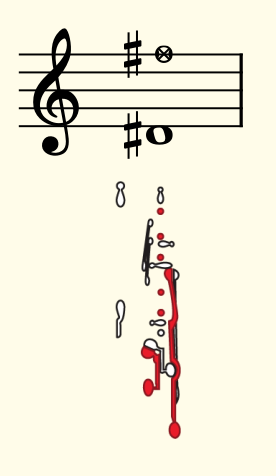We’re off into uncharted territory now with a new multiphonic I just found today. This is based on a low E although the fingering would have you think it should come out as an F. After some fiddling, I managed to relax my jaw enough for the multiphonic to emerge. Therefore, I’d say this one is somewhat difficult to achieve.

The active ingredient here is in raising the right-hand second finger, but the low C key plays an important part in splitting the sound. If it’s not speaking, adding the low B key also helps (and gives it an interesting quarter tone shading — take note composers).
Here’s the notation:
And here’s what it sounds like:
I lept off a cliff and tried combining the last two multiphonics and came up with another sound byte. To me, it reminds me of a cross between a Paris ambulance and 90’s era modem connection grind. It was incredibly hard to produce so not something for the faint of heart (to play or to listen to). Still, achieving it produced a better endorphin hit than what used to sustain me for days in facebook. Have a listen.


